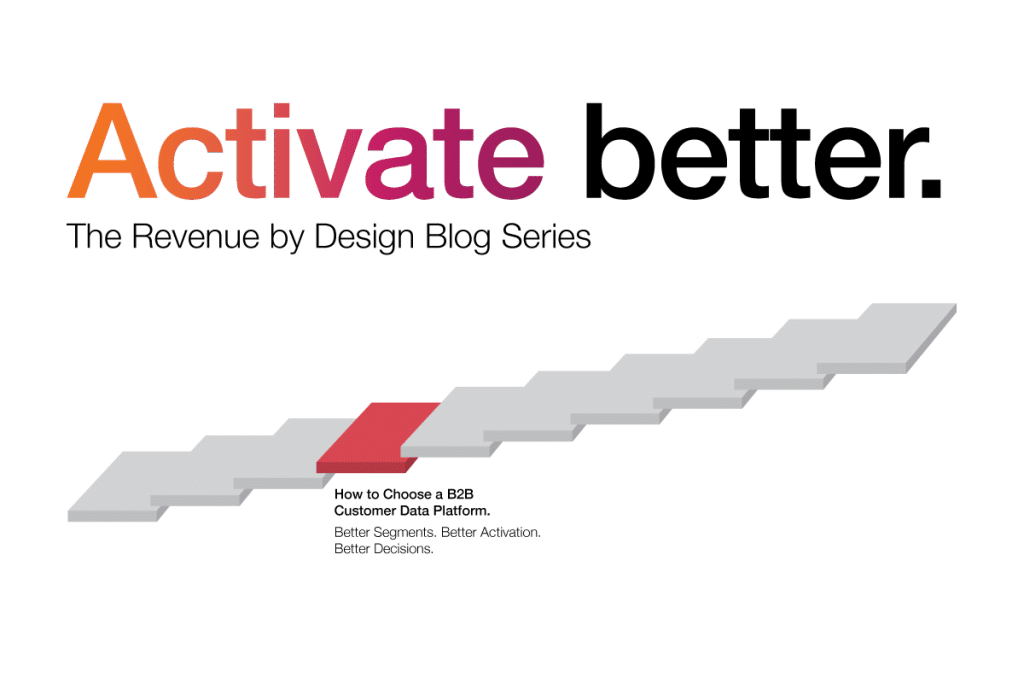As B2B marketers, our goal is to deliver effective campaigns targeted at the best opportunities that exist within our Total Addressable Market (TAM). Of course, this means identifying your TAM is the first step. The following steps are – developing your Ideal Customer Profile (ICP), comparing your ICP throughout your TAM to determine which opportunities to focus on, and then getting the right campaigns in front of them at the right time. Unfortunately, traditional approaches leave us with siloed data, stagnant (or incomplete) profiles, and the inability to support all opportunities within an account at scale. Not to mention, the amount of effort, money and time that is wasted in going after the inaccurate accounts/profiles.
For this precise reason – there is a need to constantly create (and keep updated) more accurate, dynamic profiles for people, accounts and buying centers so we can properly prioritize and target opportunities with the right campaigns. ABM in the last few years has been the go-to strategy for most B2B marketers to tackle this issue—it sure is useful in identifying the right accounts, assuming you’ve properly compiled your siloed data. However, it fails in identifying the buying teams and targeting the right people within those accounts. It does not factor in the best profiles that as a marketer one would like to target or sales would like to engage with.
So how do we make sure we have the best B2B profiles?
No matter which technology you end up using for creating and maintaining the profiles in your systems – you need to ensure that the vendor provides some of the basic capabilities—as outlined below:
- Provide third-party account & person data, from a combination of leading B2B data sources.
- Unification of first- and third-party data for account context and prioritization.
- Full account profiles including hierarchies, firmographics, standard or advanced technographics (web, SaaS and installed software and hardware), regular cadence of intent and mobile contacts.
- Direct integrations into CRM, marketing automation and other data platforms.
- Complete, up-to-date B2B profiles to target the right accounts and people, with real-time data enrichment, comprehensive segmentation criteria, intent, buyer persona scoring—and easily upgradable to advanced predictive profiling.
- Simple, straightforward pricing with all-inclusive discovery, enrichment, and form fills— a fraction of the cost of alternatives.
- Unified first- and third- party data including firmographics, demographics, technographics, account intent, mobile phones, account & contact context, specialties and more.
- Open, uncompromised quality with dozens of data partners, multisource validation, semantic categorization, and both scheduled and real-time enrichment.
Tools like Customer Data Platforms can provide all of these capabilities beyond unification as they integrate AI-optimized buying signals from curated third-party data-sources that go into building dynamic, multi-level buyer profiles which are regularly updated for accurate, timely understanding of your buyers. That, in conjunction with scoring models (Fit, Intent, Persona, TAM, and ICP), it’s easier than ever for B2B marketers to target the right people, with the right campaigns, at the right time. Read this product sheet to learn more about what to look for as you build your B2B profiles and optimize the whole process so that once you’ve discovered your TAM, buyer profiles are created at the person, account, and buying center levels – meaning you can segment, score, and prioritize entire buying groups—as well as individuals within accounts—instead of just accounts.
In short, B2B Profiling enables big and small B2B companies to minimize spend and maximize ROI by equipping them with the tools necessary to proactively target the accounts and/or people with the highest propensity to buy. Fuel and optimize your demand funnel with the best B2B buyer profiles enhanced by predictive fit, persona and intent models to revolutionize your TAM-to-opportunity prioritization and drive a full funnel optimization.



